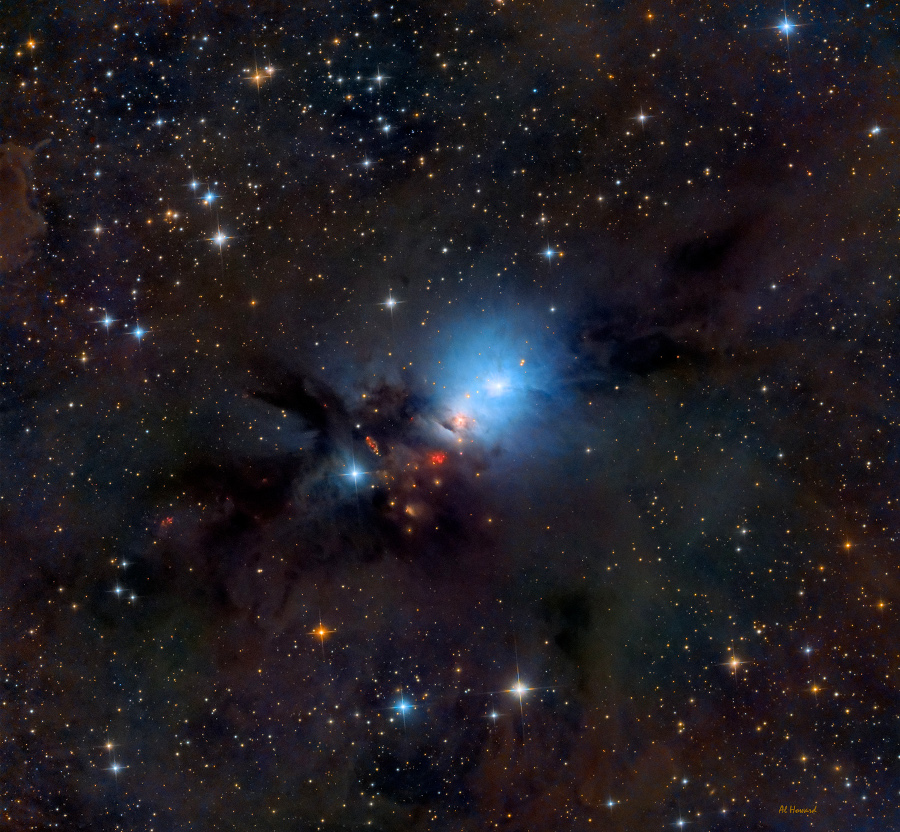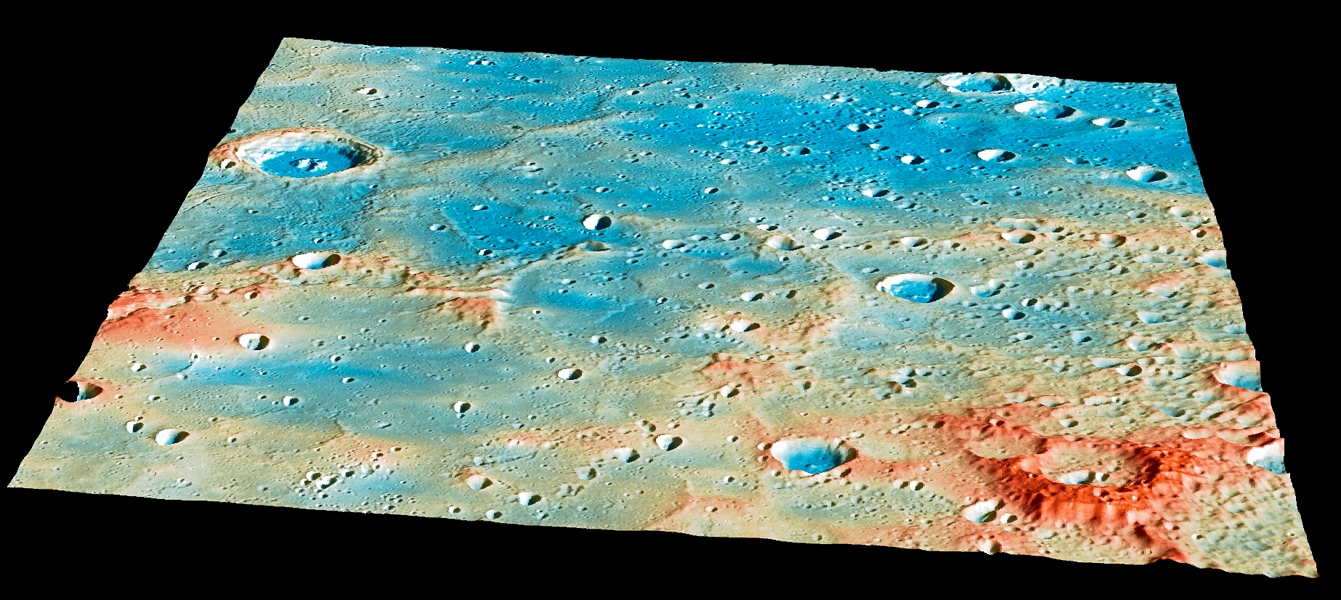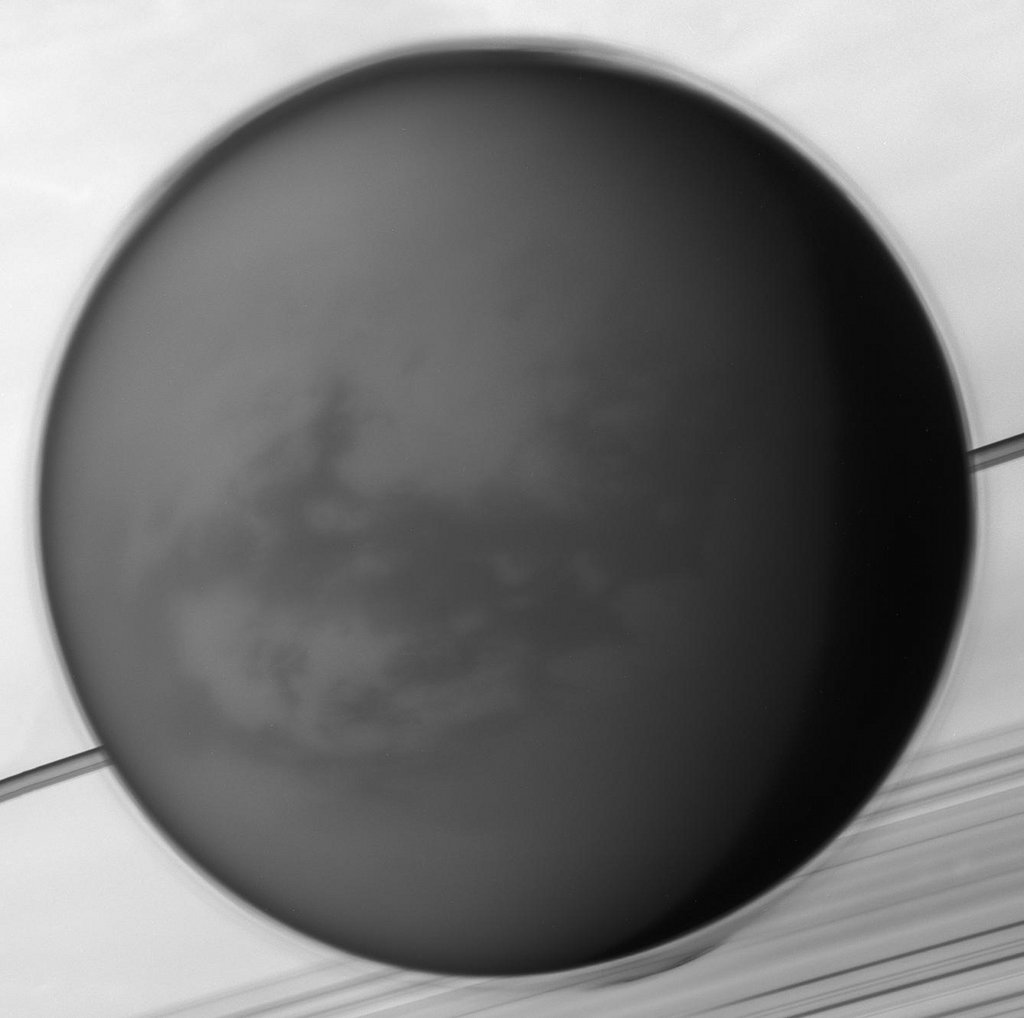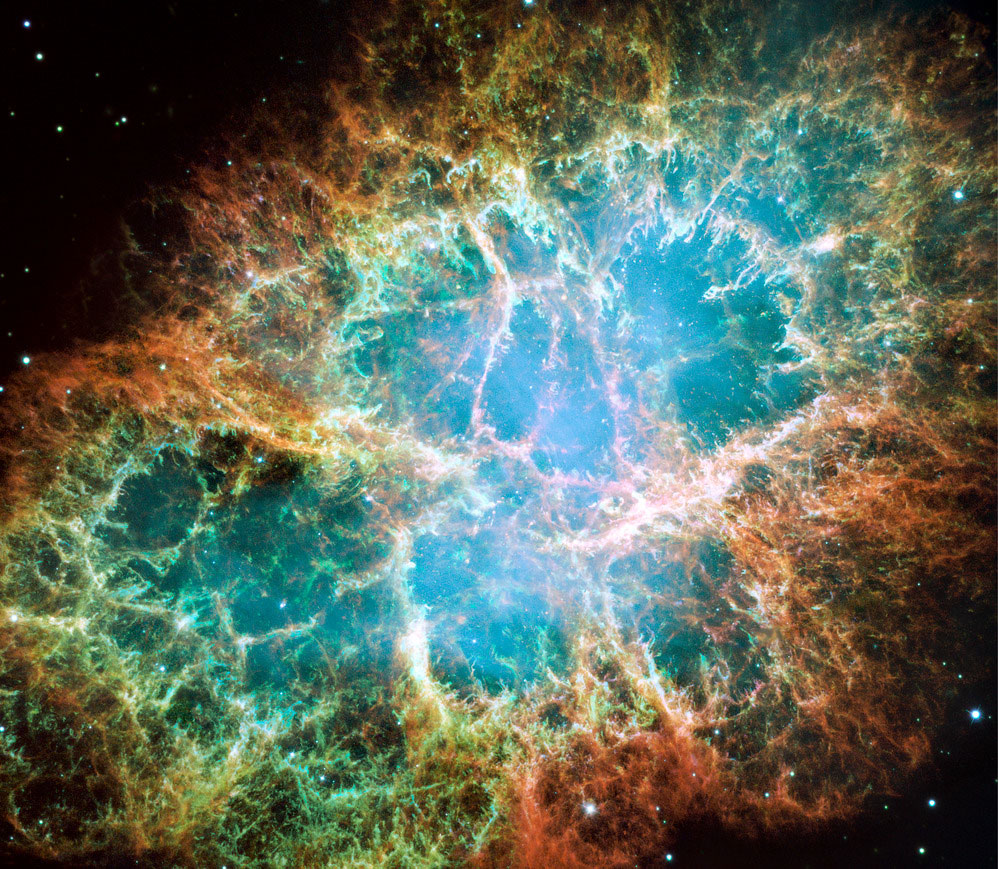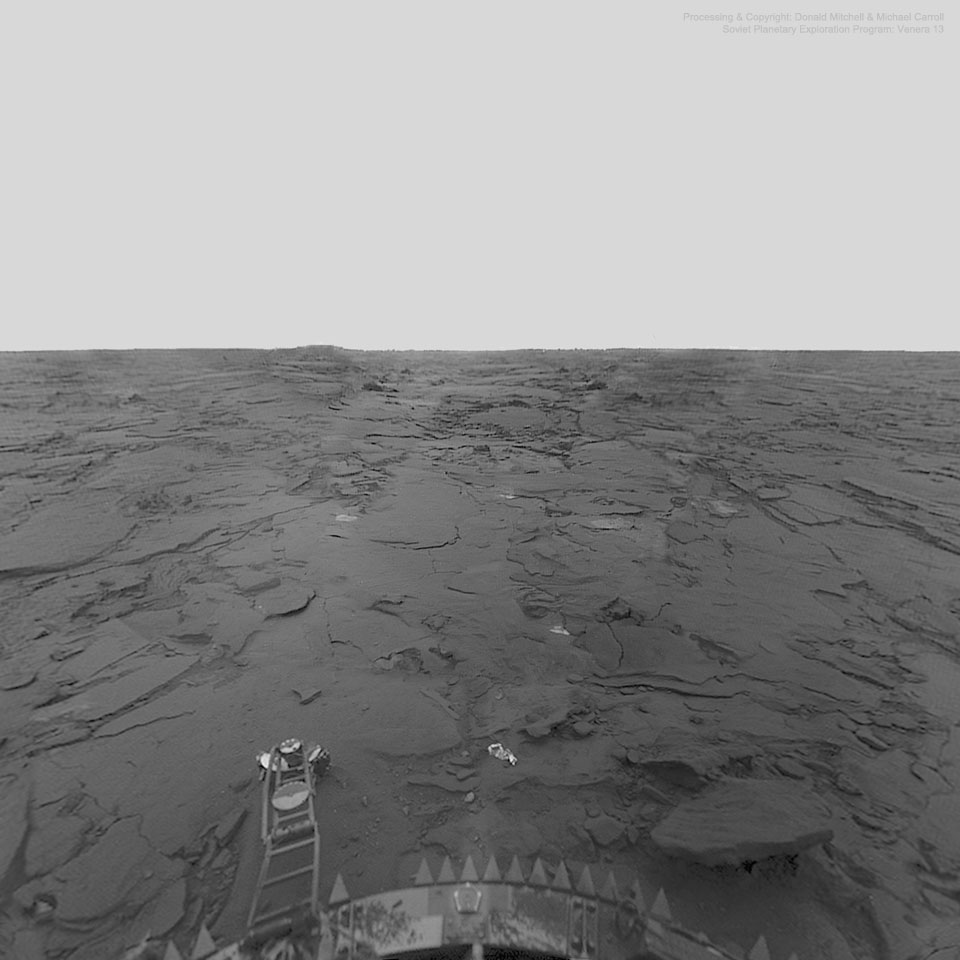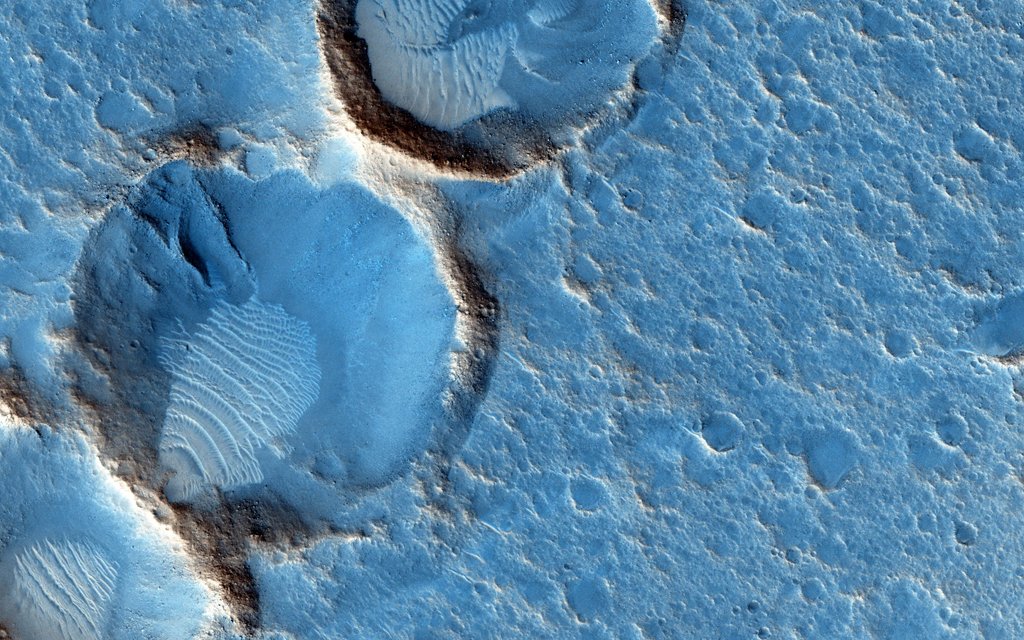
|
| Title: Astronomy Picture of the Day | |
| friendsoffortiesfive > General > General Discussion | Go to subcategory: |
| Author | Content |
|
Niceguy2
|
|
|
Date Posted:03/06/2014 11:29 PMCopy HTML I really love this site and |
|
|
Niceguy2
|
#5926 |
|
Re:Astronomy Picture of the Day Date Posted:05/02/2025 2:21 AMCopy HTML Image Credit: NASA, Johns Hopkins Univ. APL, Arizona State Univ., CIW Explanation: The first to orbit inner planet Mercury, the MESSENGER spacecraft came to rest on this region of Mercury's surface on April 30, 2015. Constructed from MESSENGER image and laser altimeter data, the projected scene looks north over the northeastern rim of the broad, lava filled Shakespeare basin. The large, 48 kilometer (30 mile) wide crater Janacek is near the upper left edge. Terrain height is color coded with red regions about 3 kilometers above blue ones. MESSENGER'S final orbit was predicted to end near the center, with the spacecraft impacting the surface at nearly 4 kilometers per second (over 8,700 miles per hour) and creating a new crater about 16 meters (52 feet) in diameter. The impact on the far side of Mercury was not observed by telescopes, but confirmed when no signal was detected from the spacecraft given time to emerge from behind the planet. Launched in 2004, the MErcury Surface, Space ENvironment, GEochemisty and Ranging spacecraft completed over 4,000 orbits after reaching the Solar System's innermost planet in 2011. |
|
|
Niceguy2
|
#5927 |
|
Re:Astronomy Picture of the Day Date Posted:05/03/2025 1:22 AMCopy HTML Science - NASA, ESA, CSA, Olivia C. Jones (UK ATC), Guido De Marchi (ESTEC), Margaret Meixner (USRA) Processing - Alyssa Pagan (STScI), Nolan Habel (USRA), Laura Lenkić (USRA), Laurie E. U. Chu (NASA Ames) Explanation: The most massive young star cluster in the Small Magellanic Cloud is NGC 346, embedded in our small satellite galaxy's largest star forming region some 210,000 light-years distant. Of course the massive stars of NGC 346 are short lived, but very energetic. Their winds and radiation sculpt the edges of the region's dusty molecular cloud triggering star-formation within. The star forming region also appears to contain a large population of infant stars. A mere 3 to 5 million years old and not yet burning hydrogen in their cores, the infant stars are strewn about the embedded star cluster. This spectacular infrared view of NGC 346 is from the James Webb Space Telescope's NIRcam. Emission from atomic hydrogen ionized by the massive stars' energetic radiation as well as molecular hydrogen and dust in the star-forming molecular cloud is detailed in pink and orange hues. Webb's sharp image of the young star-forming region spans 240 light-years at the distance of the Small Magellanic Cloud. |
|
|
Niceguy2
|
#5928 |
|
Re:Astronomy Picture of the Day Date Posted:05/04/2025 1:14 AMCopy HTML Image Credit: NASA, JPL-Caltech, Space Science Institute Explanation: Like Earth's moon, Saturn's largest moon Titan is locked in synchronous rotation with its planet. This mosaic of images recorded by the Cassini spacecraft in May of 2012 shows its anti-Saturn side, the side always facing away from the ringed gas giant. The only moon in the solar system with a dense atmosphere, Titan is the only solar system world besides Earth known to have standing bodies of liquid on its surface and an earthlike cycle of liquid rain and evaporation. Its high altitude layer of atmospheric haze is evident in the Cassini view of the 5,000 kilometer diameter moon over Saturn's rings and cloud tops. Near center is the dark dune-filled region known as Shangri-La. The Cassini-delivered Huygens probe rests below and left of center, after the most distant landing for a spacecraft from Earth. |
|
|
Niceguy2
|
#5929 |
|
Re:Astronomy Picture of the Day Date Posted:05/05/2025 2:13 AMCopy HTML Illustration Credit: Robert Hurt, NASA/JPL-Caltech Explanation: How fast can a black hole spin? If any object made of regular matter spins too fast -- it breaks apart. But a black hole might not be able to break apart -- and its maximum spin rate is really unknown. Theorists usually model rapidly rotating black holes with the Kerr solution to Einstein's General Theory of Relativity, which predicts several amazing and unusual things. Perhaps its most easily testable prediction, though, is that matter entering a maximally rotating black hole should be last seen orbiting at near the speed of light, as seen from far away. This prediction was tested by NASA's NuSTAR and ESA's XMM satellites by observing the supermassive black hole at the center of spiral galaxy NGC 1365. The near light-speed limit was confirmed by measuring the heating and spectral line broadening of nuclear emissions at the inner edge of the surrounding accretion disk. Pictured here is an artist's illustration depicting an accretion disk of normal matter swirling around a black hole, with a jet emanating from the top. Since matter randomly falling into the black hol<a href="http://asterisk.apod.com/viewtopic.php?f=39&t=21666" e should not spin up a black hole this much, the NuSTAR and XMM measurements also validate the existence of the surrounding accretion disk. |
|
|
Niceguy2
|
#5930 |
|
Re:Astronomy Picture of the Day Date Posted:05/06/2025 2:17 AMCopy HTML Image Credit & Copyright: Jose Antonio Hervas Explanation: What’s causing those lines? Objects in the sky sometimes appear reflected as lines across water — but why? If the water’s surface is smooth, then reflected objects would appear similarly -- as spots. But if the water is choppy, then there are many places where light from the object can reflect off the water and still come to you -- and so together form, typically, a line. The same effect is frequently seen for the Sun just before sunset and just after sunrise. Pictured about 10 days ago in Ibiza, Spain, images of the rising Moon, Venus (top), and Saturn (right, faint) were captured both directly and in line-reflected forms from the Mediterranean Sea. The other bright object on the right with a water-reflected line is a beacon on a rock to warn passing boats. |
|
|
Niceguy2
|
#5931 |
|
Re:Astronomy Picture of the Day Date Posted:05/06/2025 2:18 AMCopy HTML
|
|
|
Niceguy2
|
#5932 |
|
Re:Astronomy Picture of the Day Date Posted:05/07/2025 2:46 AMCopy HTML 2025 May 6 Scientific Visualization Credit: NASA, GSFC, Jeremy Schnittman & Brian P. Powell; Text: Francis J. Reddy Explanation: If one black hole looks strange, what about two? Light rays from accretion disks around a pair of orbiting supermassive black holes make their way through the warped space-time produced by extreme gravity in this detailed computer visualization. The simulated accretion disks have been given different false color schemes, red for the disk surrounding a 200-million-solar-mass black hole, and blue for the disk surrounding a 100-million-solar-mass black hole. For these masses, though, both accretion disks would actually emit most of their light in the ultraviolet. The video allows us to see both sides of each black hole at the same time. Red and blue light originating from both black holes can be seen in the innermost ring of light, called the photon sphere, near their event horizons. In the past decade, gravitational waves from black hole collisions have actually been detected, although the coalescence of supermassive black holes remains undiscovered. |
|
|
Niceguy2
|
#5933 |
|
Re:Astronomy Picture of the Day Date Posted:05/08/2025 2:26 AMCopy HTML Image Credit & Copyright: Collaborative Astrophotography Team (CAT) Explanation: In the upper left corner, surrounded by blue arms and dotted with red nebulas, is spiral galaxy M81. In the lower right corner, marked by a light central line and surrounded by red glowing gas, is irregular galaxy M82. This stunning vista shows these two mammoth galaxies locked in gravitational combat, as they have been for the past billion years. The gravity from each galaxy dramatically affects the other during each hundred-million-year pass. Last go-round, M82's gravity likely raised density waves rippling around M81, resulting in the richness of M81's spiral arms. But M81 left M82 with violent star forming regions and colliding gas clouds so energetic the galaxy glows in X-rays. This big battle is seen from Earth through the faint glow of an Integrated Flux Nebula, a little studied complex of diffuse gas and dust clouds in our Milky Way Galaxy. In a few billion years, only one galaxy will remain. |
|
|
Niceguy2
|
#5934 |
|
Re:Astronomy Picture of the Day Date Posted:05/09/2025 2:31 AMCopy HTML Image Credit: NASA, ESA, CSA, STScI; Jeff Hester (ASU), Allison Loll (ASU), Tea Temim (Princeton University) Explanation: Cataloged as M1, the Crab Nebula is the first on Charles Messier's famous list of things which are not comets. In fact, the Crab Nebula is now known to be a supernova remnant, an expanding cloud of debris from the death explosion of a massive star. The violent birth of the Crab was witnessed by astronomers in the year 1054. Roughly 10 light-years across, the nebula is still expanding at a rate of about 1,500 kilometers per second. You can see the expansion by comparing these sharp images from the Hubble Space Telescope and James Webb Space Telescope. The Crab's dynamic, fragmented filaments were captured in visible light by Hubble in 2005 and Webb in infrared light in 2023. This cosmic crustacean lies about 6,500 light-years away in the constellation Taurus. |
|
|
Niceguy2
|
#5935 |
|
Re:Astronomy Picture of the Day Date Posted:05/09/2025 2:31 AMCopy HTML
|
|
|
Niceguy2
|
#5936 |
|
Re:Astronomy Picture of the Day Date Posted:05/10/2025 2:54 AMCopy HTML Illustration Credit: NASA, Pablo Garcia Explanation: How do black holes create X-rays? Answering this long-standing question was significantly advanced recently with data taken by NASA’s IXPE satellite. X-rays cannot exit a black hole, but they can be created in the energetic environment nearby, in particular by a jet of particles moving outward. By observing X-ray light arriving from near the supermassive black hole at the center of galaxy BL Lac, called a blazar, it was discovered that these X-rays lacked significant polarization, which is expected when created more by energetic electrons than protons. In the featured artistic illustration, a powerful jet is depicted emanating from an orange-colored accretion disk circling the black hole. Understanding highly energetic processes across the universe helps humanity to understand similar processes that occur on or near our Earth. |
|
|
Niceguy2
|
#5937 |
|
Re:Astronomy Picture of the Day Date Posted:05/11/2025 2:30 AMCopy HTML Image Credit: Mars Pathfinder Mission, JPL, NASA Explanation: This picture from July 1997 shows a ramp from the Pathfinder lander, the Sojourner robot rover, deflated landing airbags, a couch, Barnacle Bill and Yogi Rock appear together in this 3D stereo view of the surface of Mars. Barnacle Bill is the rock just left of the house cat-sized, solar-paneled Sojourner. Yogi is the big friendly-looking boulder at top right. The "couch" is the angular rock shape visible near center on the horizon. Look at the image with red/blue glasses (or just hold a piece of clear red plastic over your left eye and blue or green over your right) to get the dramatic 3D perspective. The stereo view was recorded by the remarkable Imager for Mars Pathfinder (IMP) camera. The IMP had two optical paths for stereo imaging and ranging and was equipped with an array of color filters for spectral analysis. Operating as the first astronomical observatory on Mars, the IMP also recorded images of the Sun and Deimos, the smallest of Mars' two tiny moons. |
|
|
Niceguy2
|
#5938 |
|
Re:Astronomy Picture of the Day Date Posted:05/12/2025 1:51 AMCopy HTML Image Credit: Soviet Planetary Exploration Program, Venera 14; Processing & Copyright: Donald Mitchell & Michael Carroll (used with permission) Explanation: If you could stand on Venus -- what would you see? Pictured is the view from Venera 14, a robotic Soviet lander which parachuted and air-braked down through the thick Venusian atmosphere in March of 1982. The desolate landscape it saw included flat rocks, vast empty terrain, and a featureless sky above Phoebe Regio near Venus' equator. On the lower left is the spacecraft's penetrometer used to make scientific measurements, while the light piece on the right is part of an ejected lens-cap. Enduring temperatures near 450 degrees Celsius and pressures 75 times that on Earth, the hardened Venera spacecraft lasted only about an hour. Although data from Venera 14 was beamed across the inner Solar System over 40 years ago, digital processing and merging of Venera's unusual images continues even today. Recent analyses of infrared measurements taken by ESA's orbiting Venus Express spacecraft indicate that active volcanoes may currently exist on Venus. |
|
|
Niceguy2
|
#5939 |
|
Re:Astronomy Picture of the Day Date Posted:05/13/2025 2:44 AMCopy HTML Illustration Credit: ESA, Gaia, DPAC, Stefan Payne-Wardenaar Explanation: What does our Milky Way Galaxy look like from the side? Because we are on the inside, humanity can’t get an actual picture. Recently, however, just such a map has been made using location data for over a billion stars from ESA’s Gaia mission. The resulting featured illustration shows that just like many other spiral galaxies, our Milky Way has a very thin central disk. Our Sun and all the stars we see at night are in this disk. Although hypothesized before, perhaps more surprising is that the disk appears curved at the outer edges. The colors of our Galaxy's warped central band derive mostly from dark dust, bright blue stars, and red emission nebulas. Although data analysis is ongoing, Gaia was deactivated in March after a successful mission. |
|
|
Niceguy2
|
#5940 |
|
Re:Astronomy Picture of the Day Date Posted:05/14/2025 2:09 AMCopy HTML Illustration Credit: ESA, Gaia, DPAC, Stefan Payne-Wardenaar Explanation: What does our Milky Way Galaxy look like from the top? Because we are on the inside, humanity can’t get an actual picture. Recently, however, just such a map has been made using location data for over a billion stars from ESA’s Gaia mission. The resulting featured illustration shows that just like many other spiral galaxies, our Milky Way has distinct spiral arms. Our Sun and most of the bright stars we see at night are in just one arm: Orion. Gaia data bolsters previous indications that our Milky Way has more than two spiral arms. Our Galaxy's center sports a prominent bar. The colors of our Galaxy's thin disk derive mostly from dark dust, bright blue stars, and red emission nebula. Although data analysis is ongoing, Gaia was deactivated in March after a successful mission. |
|
|
Niceguy2
|
#5941 |
|
Re:Astronomy Picture of the Day Date Posted:05/15/2025 2:25 AMCopy HTML Image Credit & Copyright: Andrea Iorio, Vikas Chander & ShaRA Team Explanation: This pretty nebula lies some 1,500 light-years away, its shape and color in this telescopic view reminiscent of a robin's egg. The cosmic cloud spans about 3 light-years, nestled securely within the boundaries of the southern constellation of the Furnace (Fornax). Recognized as a planetary nebula, egg-shaped NGC 1360 doesn't represent a beginning, though. Instead, it corresponds to a brief and final phase in the evolution of an aging star. In fact, visible at the center of the nebula, the central star of NGC 1360 is known to be a binary star system likely consisting of two evolved white dwarf stars, less massive but much hotter than the Sun. Their intense and otherwise invisible ultraviolet radiation has stripped away electrons from the atoms in their mutually surrounding gaseous shroud. The blue-green hue inside of NGC 1360 seen here is the strong emission produced as electrons recombine with doubly ionized oxygen atoms. |
|
|
Niceguy2
|
#5942 |
|
Re:Astronomy Picture of the Day Date Posted:05/16/2025 2:41 AMCopy HTML Image Credit: NASA, Johns Hopkins Univ./APL, Southwest Research Institute Explanation: This shadowy landscape of majestic mountains and icy plains stretches toward the horizon on a small, distant world. It was captured from a range of about 18,000 kilometers when New Horizons looked back toward Pluto, 15 minutes after the spacecraft's closest approach on July 14, 2015. The dramatic, low-angle, near-twilight scene follows rugged mountains formally known as Norgay Montes from foreground left, and Hillary Montes along the horizon, giving way to smooth Sputnik Planum at right. Layers of Pluto's tenuous atmosphere are also revealed in the backlit view. With a strangely familiar appearance, the frigid terrain likely includes ices of nitrogen and carbon monoxide with water-ice mountains rising up to 3,500 meters (11,000 feet). That's comparable in height to the majestic mountains of planet Earth. The Plutonian landscape is 380 kilometers (230 miles) across. |
|
|
Niceguy2
|
#5943 |
|
Re:Astronomy Picture of the Day Date Posted:05/17/2025 2:05 AMCopy HTML Image Credit: NASA, ESA, CFHT, NOAO; Acknowledgement - K.Kuntz (GSFC), F.Bresolin (U.Hawaii), J.Trauger (JPL), J.Mould (NOAO), Y.-H.Chu (U. Illinois) Explanation: Big, beautiful spiral galaxy M101 is one of the last entries in Charles Messier's famous catalog, but definitely not one of the least. About 170,000 light-years across, this galaxy is enormous, almost twice the size of our own Milky Way. M101 was also one of the original spiral nebulae observed by Lord Rosse's large 19th century telescope, the Leviathan of Parsontown. Assembled from 51 exposures recorded by the Hubble Space Telescope in the 20th and 21st centuries, with additional data from ground based telescopes, this mosaic spans about 40,000 light-years across the central region of M101 in one of the highest definition spiral galaxy portraits ever released from Hubble. The sharp image shows stunning features of the galaxy's face-on disk of stars and dust along with background galaxies, some visible right through M101 itself. Also known as the Pinwheel Galaxy, M101 lies within the boundaries of the northern constellation Ursa Major, about 25 million light-years away. |
|
|
Niceguy2
|
#5944 |
|
Re:Astronomy Picture of the Day Date Posted:05/18/2025 1:58 AMCopy HTML Image Credit: HiRISE, MRO, LPL (U. Arizona), NASA Explanation: This close-up from the Mars Reconnaissance Orbiter's HiRISE camera shows weathered craters and windblown deposits in southern Acidalia Planitia. A striking shade of blue in standard HiRISE image colors, to the human eye the area would probably look grey or a little reddish. But human eyes have not gazed across this terrain, unless you count the eyes of NASA astronauts in the sci-fi novel, "The Martian," by Andy Weir. The novel chronicles the adventures of Mark Watney, an astronaut stranded at the fictional Mars mission Ares 3 landing site, corresponding to the coordinates of this cropped HiRISE frame. For scale, Watney's 6-meter-diameter habitat at the site would be about 1/10th the diameter of the large crater. Of course, the Ares 3 landing coordinates are only about 800 kilometers north of the (real life) Carl Sagan Memorial Station, the 1997 Pathfinder landing site. |







